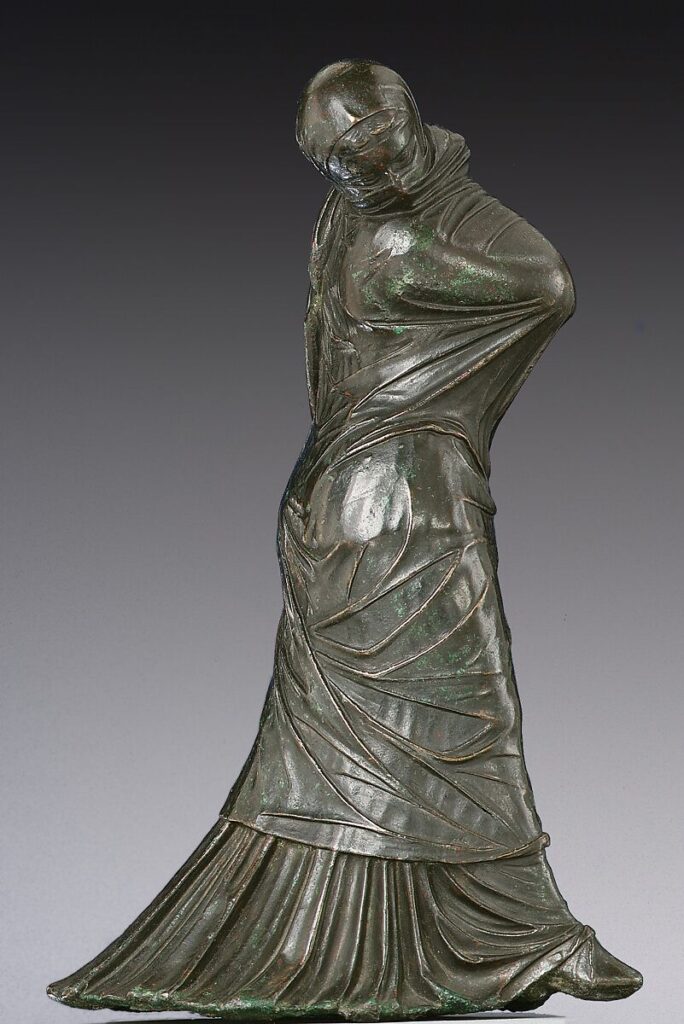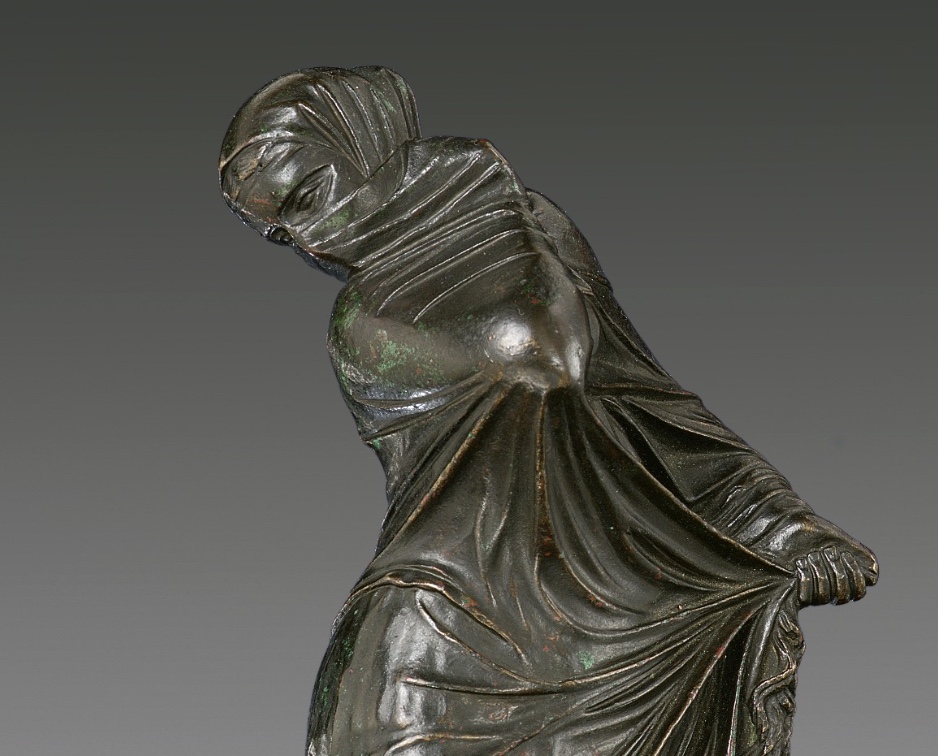Movement and three-dimensionality are words commonly bandied about when it comes to the sculptural innovations of the Hellenistic period, and with this little beauty in the Met, it’s not empty art historical jargon!
Although she is small (ca. 20 cm), the ‘Baker dancer’ (as she is often referred to, after the bequest that fortuitously landed her in the Met) is full of movement, with her twirling step eloquently rendered by the swing of her complex garments. Her thin cloak is drawn up over her head, alluringly held over her mouth and chin, the fringed edge gathered with one hand, and trailing behind her. A jutting elbow stretches the rippling fabric taut, revealing the delicate vertical pleating of the dress beneath it. And just peaking out of this sartorial tour de force is a dainty booted foot, toe pointed.




A nearly sheer veil (only visible with very close inspection) covers her entire face from the hairline down, with cutouts for the eyes. This detail, as well as the fringed edge of her cloak (often associated with Isiatic cult) make it likely that she was one of the quasi-professional performers famous in Hellenistic Alexandria.
The exoticism of these performers (particularly these veiled ladies – demure, but on display), the idea of them, and representations of them, caught the interest of a broader Graeco-Roman public. As intriguing to them as this dancer is to us today. In the Met’s Hellenistic treasury, she stands apart from the fray in her own vitrine, inviting the gaze from every angle.




